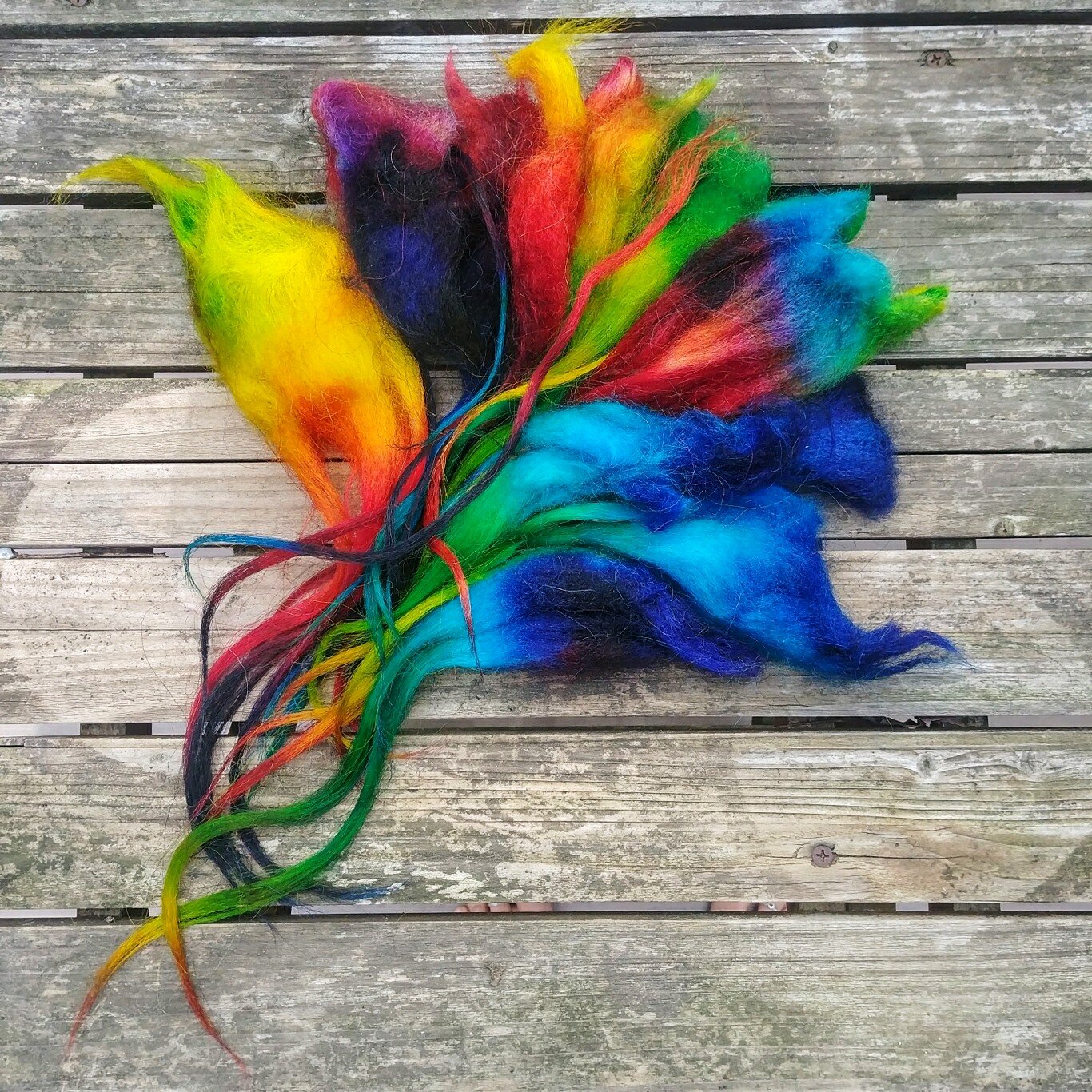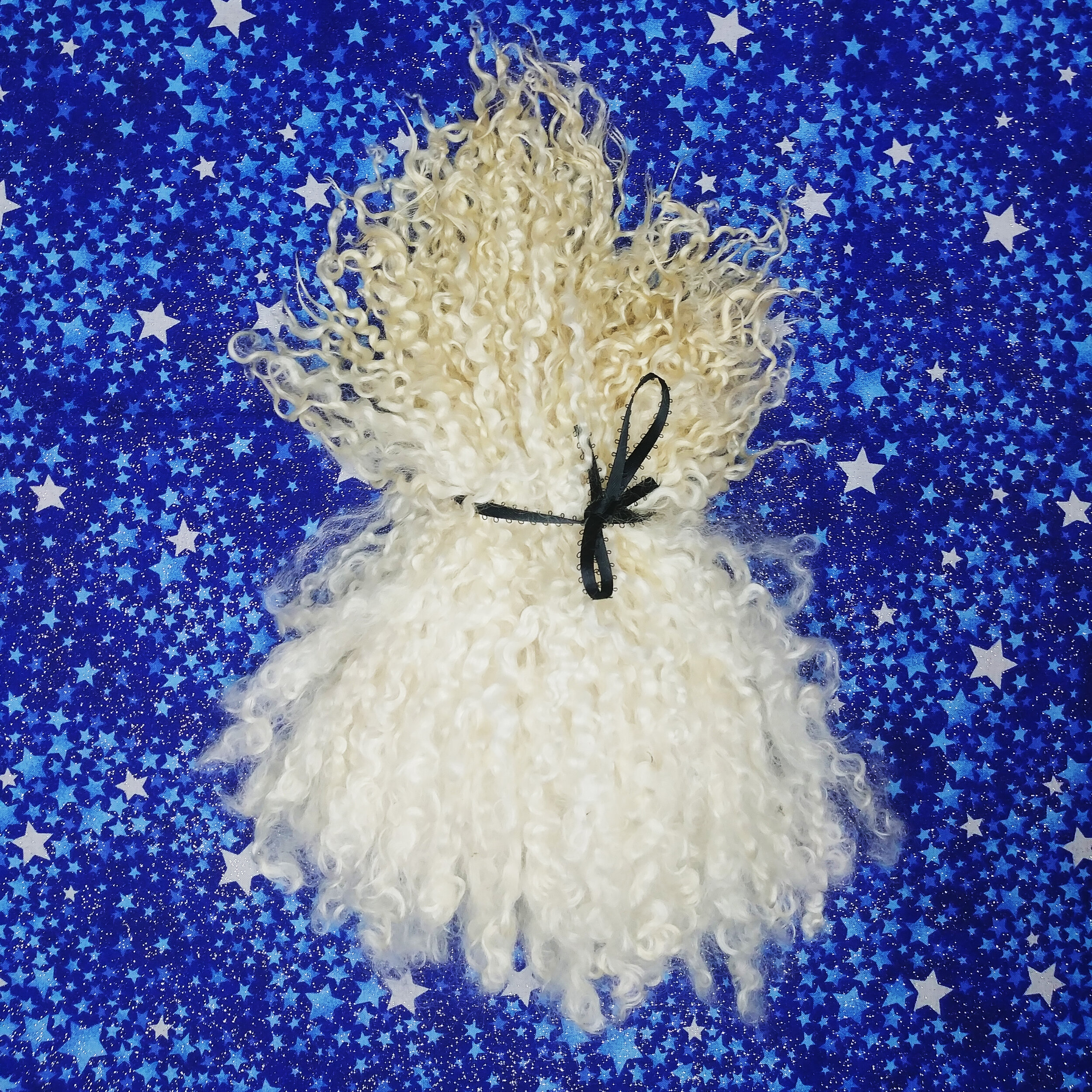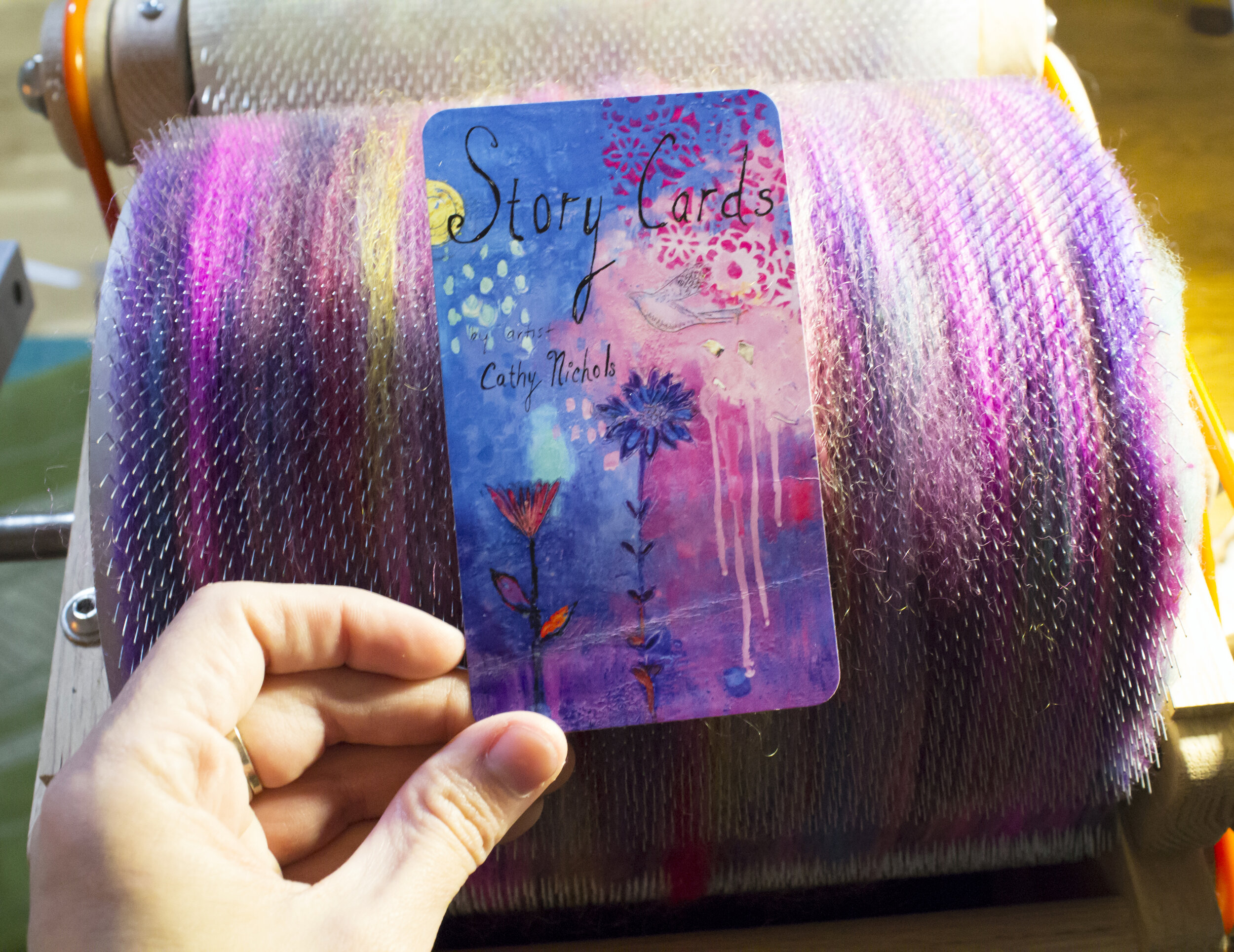The Ultimate Guide to Wool
FTC Disclosure: Please note that some of the links in this post are affiliate or referral links (full disclosure here), and if you make a purchase or sign up for a service within a certain timeframe after clicking on one of those links, I may earn a small commission paid by the retailer at no extra cost to you. I wouldn't recommend anything that I don’t or wouldn't use myself. Thank you for your support!
This post was last edited/updated in March 2021.
I remember when I first started out, I didn't have any books or guides or any one source that really explained what all the different terms meant, let alone understood the concept of using core wool. Let's just say the first project I did ended up being quite a bit more expensive than it needed to be, though I suppose it could've been worse if I invested in using merino wool for my core! So to help you keep from making the same mistakes as I did, and so you understand the difference between the different types of wool available out there, let's talk all about wool and the different terminology you may come across while you're on your felting journey!
When needle felting, we're working with raw wool which has already been washed and processed (unless you own your own sheep, then you're doing this or sending it to someone else to be processed), and the two most common forms you'll find it are in roving and batts.
Romney roving
Roving is when wool comes in a rope-like form, sometimes found as a ball or braided. All of the individual fibers have been carded multiple times until they're all straight and mostly running in the same direction. Believe it or not, the fiber does not come off the sheep straight (it's curly, some more than others). All wool can come in roving form, though the most popular are Merino and other fine wool. The primary reason for roving is for spinners, since having all the fiber running in the same direction makes it easier to spin into yarn. It's twisted a bit as they form it into a rope, and you can get thick roving or pencil roving (which is similar to yarn but not spun). It's a bit less useful for wet felting, especially since with wet felting you need to crisscross the fibers so they interlock as you felt them down. With needle felting it doesn't matter as much if it is in roving or batt form, because you interlock with the needle, however with roving you can get "edges" or "brush strokes" where you added more fiber. It bothers some, others like the effect. Top is similar to roving (not to be confused with the stuff you cover your core wool) except that it's not twisted. It's just staples of long, straight fiber that is all going in the same direction. Fiber for top is also processed very differently from that of roving. Roving is most often taken off, or dizzed off a batt (using a device with a hole in it to pull a rope of loose fiber through in a relatively consistent thickness), whereas top is usually processed with wool combs (which is similar to a wide toothed hair comb, except with really sharp spikes, and clamped to the table) by grabbing a handful of fiber and pulling it through the combs to comb it out.
Hand-dyed green batt
Batts are when the wool is a thick, fluffy mat of jumbled up fiber. Depending on a number of factors, like how many times the fiber is run through the carding process, it may be more or less smooth (usually it’s not fully straightened out which adds loft to the batt, as in the photo above), and just pulled off the carder as is, in a big fat fluffy sheet without stretching (or dizzing) it into roving. Some felters claim that this is much faster/easier to needlefelt because the fiber is already crisscrossed, and there are no hard edges. So when you're trying to cover a large piece, you can blend the patches of wool down easier. It's definitely much easier to use with wet felting because you don't have to lay out staples of wool in one direction, then another, then back and forth. The original purpose of batts were for use in quilts, and you can still get wool quilt batting - hence where the name comes from; however most commercial stores have replaced it with cotton or polyester batting. Batts are typically what you'd like to use as your core wool (explained further down) to help you speed up the process, though I've used roving just fine for the same purpose. If you look at my 3D hand video, it was entirely made using plain, romney wool roving.
Art roving/top or blended roving/top: Sometimes you’ll find roving that is made up of multiple colors and types of fiber. These are really popular with spinners, as you can just spin from them to make gorgeous multi-colored mixed-fiber art yarns. They are often dizzed off and art batt (the process of pulling fiber off a bat into roving) into these long, skinny fiber ropes.
Here I am in the process of creating my own art batt while trying to match up the colors with the ones on the card. There are fiber artists who specialize in coming up with amazing color schemes and selling their batts. If you want to see some really amazing ones, go give FrostYarn a follow on Instagram
Art batts or landscape batts are prepared batts with a variety of fibers in all sorts of colors, including coarse and fine wools, angelina fiber (sparkly polyester material), silks, tencel, cashmere, angora, fancy locks, nepps, really anything they can throw at it to get the color and texture they desire. They often have a certain color theme to go with it (and some artists will share their inspiration photos with the batt so you can see how they came up with the colorways), or you might find ones with interesting color combinations. Using art batts in your projects can add visual interest, or help you work up a quick background for a wool painting. If you start processing your own fiber and get yourself a blending board or a drum carder, it’s a really fun thing to get into (it takes a bit of practice to learn how to “paint” those fibers down on the drum just right to get these gorgeous batts).
Vegetable matter, aka VM
VM is short for vegetable matter. The specks of dirt and plant matter are not poop! I can’t tell you how many times that’s come up in discussion - poopy bits get tossed during the skirting process, sheep aren’t eliminating on each other, just… gross). The only time you are likely to come across any poop (which will be dry and hardened) is if you start processing whole fleeces yourself and something gets missed - at which point just toss it in the compost. If you find little pieces of straw or other material in your wool, that does not mean that there's anything wrong with it, or that they didn't thoroughly clean it. No amount of tumbling, washing, even dyeing will get rid of all of the vegetable matter. If you find yourself processing your own wool at some point, cheaper fleeces can be a bit dirtier (so it’s more work to get as much of that as possible out). Some farmers may opt to cover their sheep with coats to reduce the amount of vegetable matter in the final fleece. Most don’t, because if it’s not done right, it can damage the fiber more, be unpleasant for the animal, and the coats, which cost money, get worn very quickly and need to be frequently replaced or mended. When working with wool, it’s important to remember that we are working with an animal product, and this animal lives outside and eats hay and spends its life frolicking in the fields. The more a fiber is processed, the less VM there will be in it (batting can have more in there, but the more it’s carded or combed, the more will fall out in the process). There is one process that does seem to get rid of it, but most wool suppliers do not use this method, that process being "carbonization." You'll often find suppliers mention that their wool is not carbonized. It is a chemical process which disintegrates the VM while they're scouring the wool. Many believe it is too harsh a process (and may possibly be damaging to the fiber), and it's really not that necessary. It's just as easy to pull the little bits out as you go along (or don’t worry about it if it’s in your core - just let it go.)
Nepps are teeny tiny balled up fibers that you'll sometimes find in wool. It's normally a waste byproduct as a result of the carding process, depending on how the teeth are matched up with the wool being carded (fine wools are prone to breaking and creating nepps) and made from torn fiber or second cuts. There's one supplier of wool that I know of that is a bit neppy, and another that I know sells them separated out if you want to add some fun texture to your projects. I've even seen tutorials on how to make your own, so it's definitely a sought-after quality for some crafters/artists. It can get in the way if you're working on tiny details, but if you pick up a pair of dog brushes, you can easily card most of them out, leaving you with nepp-free wool. I also find and pick them out after dyeing my fleeces before carding them, they can kind of form themselves. It took a while for me to get used to since I started out using merino roving. They do add a fun texture to projects, if that’s the effect you’re going for.



Locks are wool that has been washed and dyed but not carded during any part of the process. It's literally how the fiber looks coming straight off the animal. This is great for doing hair (such as when making gnomes), or adding a wonderful textural element to your piece. I've used it to give the impression of clouds in my wool paintings. They may come from either sheep or goats, and will often state which one's which when purchasing.
Core wool is the stuff you use on the inside of a 3D sculpture. Of course, if you're making a massive sculpture, you don't have to stick to just wool! I've heard of people using sponges stuffed in a wire armature that was then wrapped with wool, or using fiberfill (polyester fiber used inside pillows and stuffed animals). It's can become a bit costly to fill a giant sculpture with pure wool, unless you buy it in bulk. What's even more costly, however, is using your finest merino to fill a sculpture. Core wool is often on the coarse side, or a blend of coarse with fine wool because it felts down quickly and helps you build the shape of your object, thus leaving you with more time to work on the outer skin/details - and oftentimes you won’t even really know which types of wool breeds are in the mix, because it depends on the fiber mill (or a shop like Living Felt who has their own proprietary blend) how they make their batting. Most of the time it's undyed, though if you want some of your core to show through or pull it out with a reverse barb needle, you can use dyed core for your sculpture as well. Save your more expensive, dyed, fine wool for your top coat, or surface of your sculpture, and use the cheaper core on the inside. You don't have to have a top coat, but if the sculpture underneath is a bit lumpy or has hard edges from where you wrapped the fiber, you can use a surface coat of wool to smooth out the finish.
One of my wet felted felt sheets
Felt is the stuff most people are familiar with whenever you introduce someone to needle felting, and these days they only really know of the polyester felt that you find in stores. At least the younger generations do. The most popular use of felt for the longest time was in making hats, in fact, the term "mad hatter" and our introduction to the detrimental effects of mercury poisoning came from the process hatmakers used to separate the fur from the skin and matted down into felt, also known as carroting. Luckily, mercury has long been phased out of the feltmaking process, and hats are made today through a combination of wet and needle felting. In any case, it's densely matted down fiber, or essentially the finished piece after it's been felted and fulled (shrunk down and made dense). Prefelt is the material between the initial process of felting and prior to fulling. It mostly holds together, but it can still be pulled apart with minimal force. You can purchase prefelt to use in your projects, saving you the trouble of making it yourself, OR you can spend a day or two making up a bunch of your own prefelt which you can then save for projects later on.
Silk fiber
Exotic Fibers are fibers that do not come from sheep, and include silk, camel, angora (bunnies or goats), cashmere (which comes from the Kashmir goat, not sheep), and alpaca, just to name a few. Because we primarily work with sheep wool, it's easier to separate the other fiber into a different category to remove any confusion when purchasing supplies. Silk does not just come in the form of fiber or thread - you can also get it in the form of cocoons or carrier rods. You may also see silk hankies (these are not actually handkerchiefs, but very loose sheets of silk fibers that come from stretching out the cocoons - this video shows the process of making hankies by hand). Cocoons may be dyed or undyed (so you can dye them yourself) and are used to add texture to your piece, especially with wetfelting. Carrier rods also can come dyed or undyed and are the byproduct of reeling silk from a cocoon and is basically a tube that's been split open, usually as long and thick as a finger or thinner, flat or hollow, of tangled up silk that's been pulled off the rod. It still contains sericin, which is the gum that holds the cocoons together. Multiple rods can be flattened and pressed/fused together to create a silk "paper." This isn't a commonly used product in felting, BUT it is used in fiber art so I thought I'd include it in this post.
Did I miss anything? Are there any terms I need to add to the list? Leave a comment below, and I'll add it to the post for all the future newcomers to the art of felting!







